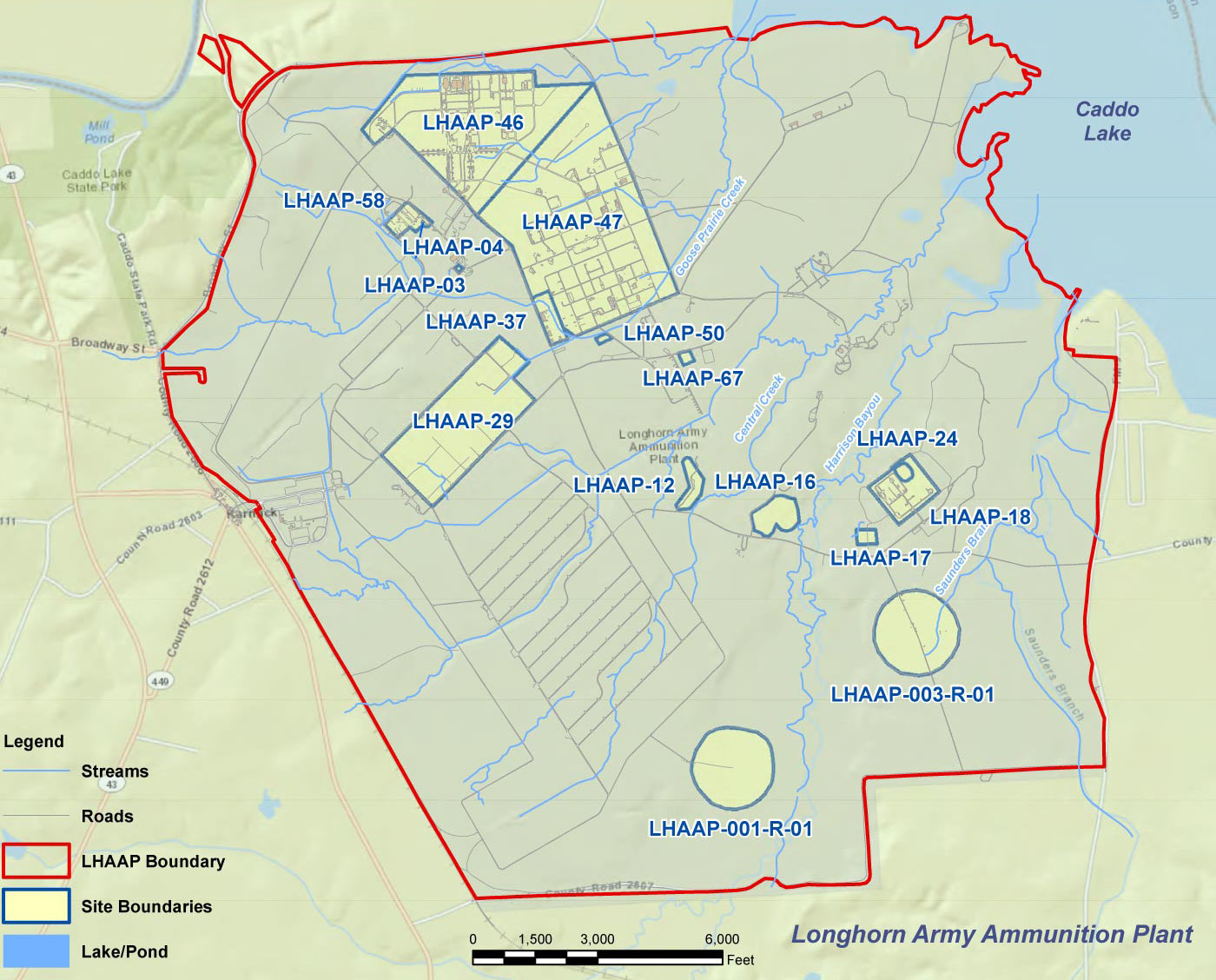Longhorn Army Ammunition Plant
Environmental Restoration Program
LHAAP-47
Site Description/History
LHAAP was established in December 1941 with the primary mission of manufacturing TNT. Production of TNT began at Plant 1 in October 1942 and continued through World War II until August 1945, when the facility was placed on standby status until February 1952. The LHAAP facility was reactivated with the opening of Plant 2, where pyrotechnic ammunition, such as photoflash bombs, simulators, hand signals, and tracers for 40 millimeter ammunition, were produced until 1956.
In December 1954, a third facility, Plant 3, began production of solid-fuel rocket motors for tactical missiles. LHAAP-47 was identified through historical records as Plant 3, producing rocket motors and later pyrotechnic and illumination devices. Construction of Plant 3 began in July 1953 and production of rocket motors began in December 1954. Rocket motor production continued until the early 1980s. Some of the rocket motor production facilities were converted to produce pyrotechnic and illumination devices and were active until approximately 1997.
Industrial solid wastes and possibly hazardous wastes, such as parts cleaners and spent solvents, may have been generated by these activities. Fifty waste process sumps and three waste rack sumps were located within LHAAP-47 that are included along with sumps from other sites.
Remediation Activities
The environmental media (soil, groundwater, surface water, sediment, and sump contents) at LHAAP-47 have been the subject of numerous investigations to identify potential contamination. The field investigations identified soil and groundwater contamination at LHAAP-47. In November 1999, plastic liner material was placed around Building 25C by the U.S. Army over areas known to contain perchlorate in the soil to prevent migration of perchlorate to Goose Prairie Creek. A Post-Screening Investigation conducted from 2018 to 2020, identified and defined the extent of residual TCE DNAPL in Shallow and Upper Intermediate Zone groundwater near Building 46A.
Contaminants of Concern
Perchlorate, TCE, cis-1,2- DCE, VC, 1,1- DCE, PCE, 1,2- DCA, acetone, chloroform, trans-1,2- DCE, 2,4,6- TNT, 2,4- DNT, 2,6- DNT, bis(2-ethylhexyl) phthalate, pentachlorophenol, aluminum, antimony, arsenic, cadmium, chromium, cobalt, manganese, nickel, silver, strontium, thallium, tin, and vanadium in Groundwater.
Perchlorate and TCE in Soil.
Current Phase
In the Remedial Investigation ( RI) / Feasibility Study ( FS) phase, with a Final Record of Decision ( ROD) anticipated in 2021. Besides LUCs, the planned remedy includes excavation of the perchlorate impacted soil; groundwater in-situ thermal desorption ( ISTD), enhanced in-situ bioremediation ( ISB) in target areas; biobarriers near the leading edges of the northern and southern perchlorate and VOC plumes, and at the southern edge of the perchlorate plume near Goose Prairie Creek; and monitored natural attenuation ( MNA).
Future Phase
Future planned phases to complete remedy implementation are Remedial Design ( RD) and Remedial Action Construction ( RAC).
